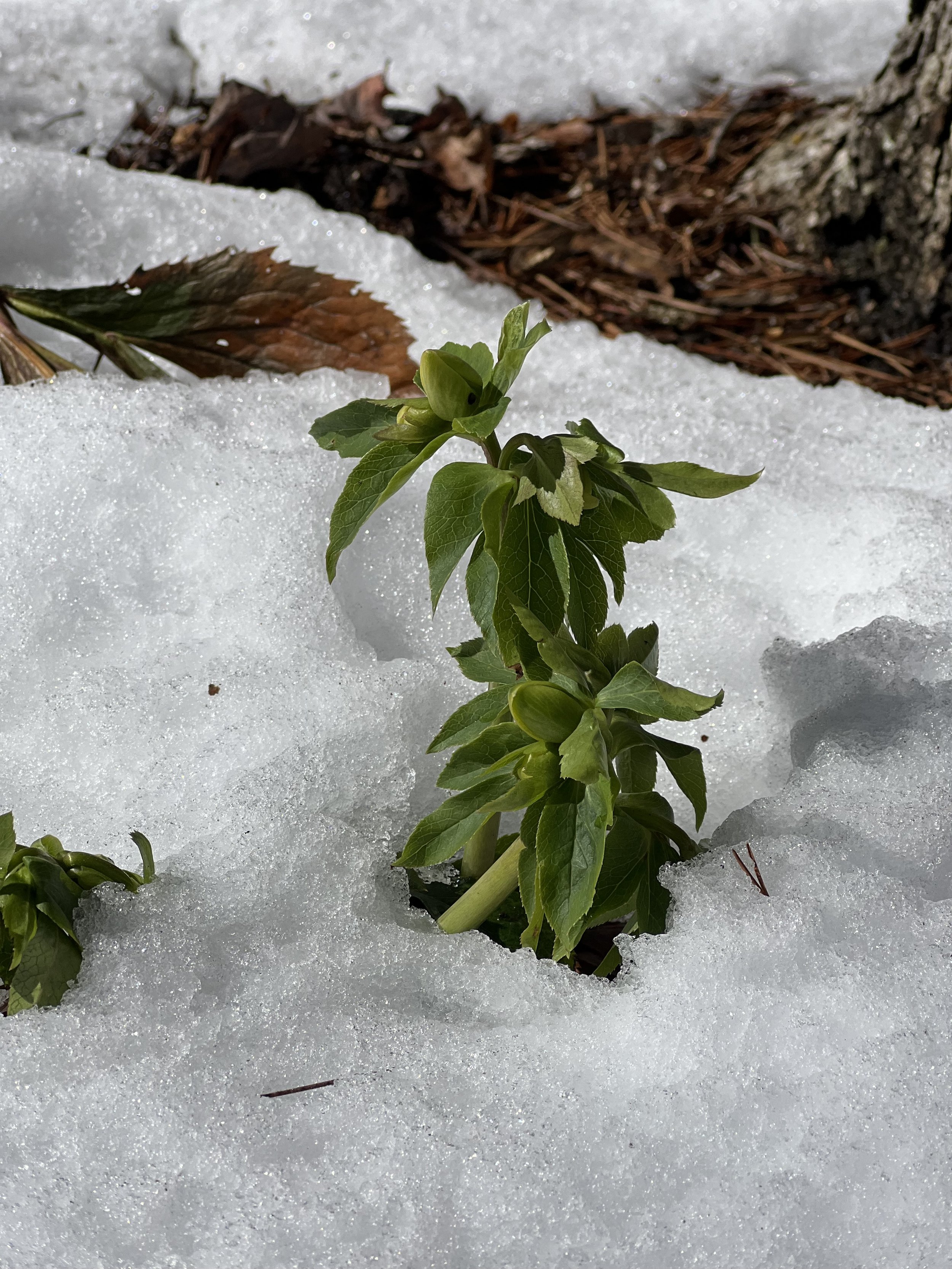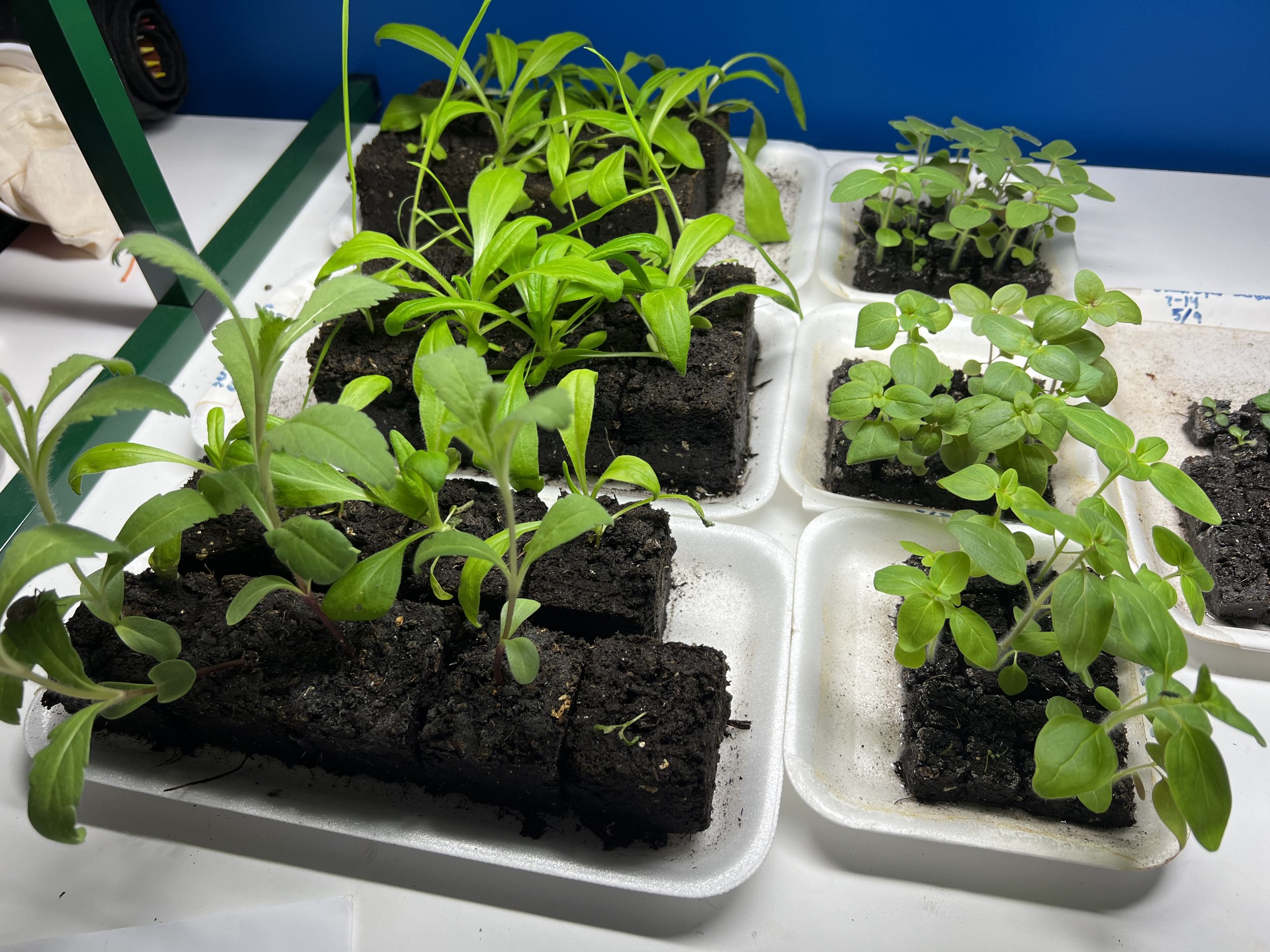A “messy” yard = a thriving ecosystem!
Why should you wait to clear your garden this spring? It’s for the pollinators!
It’s tempting, especially on warmer days, to start preparing your garden beds for spring. Here’s why you should hold off:
Your yard cleanup could wipe out an entire generation of native pollinators!
- 80% of native bees nest in dead plant stems
- One stem can house up to 20 pollinator larvae
- Early cleanup destroys 6 months of bee development
Here’s what could be overwintering in your garden, especially if you have native plants!
- Mason bee cocoons
- Leafcutter bee nests
- Native wasp larvae
- Beneficial predator eggs
Here’s where they could be hiding:
- Hollow plant stems
- Leaf piles
- Seed heads
How you can help:
- Wait until soil temperatures are consistently 50˙F/10˙C or above (in Central Virginia, zone 7b, that is usually in May)
- Leave stems and seed heads on plants that die back in the fall
- Create brush piles
If you have to clear your garden beds before May (say you’re part of an HOA, for example), you can still do so and help the pollinators! Keep as much of the stems intact as possible by cutting them down close to the ground and pile them up out of the way so that the overwintering critters can still survive. Once those warmer temperatures arrive, then that material can be composted, put in yard bags, etc. to clear it out of your yard.
Pollination! A visitor on one of the crocus that popped up in late February.
Not only do the pollinators benefit from this, but the birds will as well! Research suggests that, even in the winter, wild bird diets typically consist of only 25% of intake from bird feeders. This got me thinking: if all those happy little birds are getting less than a quarter of their diet from the bird feeders, then what else are they eating?
Many birds, such as Cardinals and Sparrows, forage for seeds in native grasses, trees, and shrubs, and also eat wild berries and overwintering insects (rude, who wants to be disturbed while they sleep? But that’s the circle of life 🦁). When snowfall covers the seeds on the ground, these birds depend on grass seeds and berries that haven’t fallen to the ground, so it’s crucial not to disturb these food sources.
Leaving stems and seed heads on your plants that die back in the fall means that the birds will have plenty to eat when winter weather arrives. The seed heads on my Rubeckia (Black-eyed Susan) and Echinacea (Purple Coneflower) are very popular with the wild birds during the winter and they look lovely covered in a bit of snow.
Rubeckia (Black-eyed Susan) and Echinacea (Purple Coneflower) seed heads wearing their snow caps during a recent snow
A personal story: One spring, a rag-tag group of raccoons (or bears, I don’t know for sure) destroyed my bird feeder and I got carried away with work and life and did not replace it. I thought the birds would lose interest and leave the area, but something happened that has inspired me to not put out birdfeeders: The birds started foraging for food in my garden, which meant that I had almost NO pest damage on my garden that year. It was magical.
So I don’t set out bird feeders anymore during the warmer months and let those happy little birds do what they were made to do.
Nature really will take care of herself if you let her do her thing. You will benefit and your environment will benefit. Follow her lead and seriously, most of the common garden issues will just not happen.
You’ve probably heard that adding native plants are great for the environment, but hearing about exactly HOW they benefit the environment can be helpful. So if you’re in a spot where you’re wanting to add more to your garden, add native plants! A few resources:
The National Wildlife Federation has a native plant finder (https://nativeplantfinder.nwf.org/)
Find your local Master Gardener group, their site will likely have information on native plants in your area (search for your location + “Master Gardeners”)
If you’re in Charlottesville, there are plenty of local garden centers that have clearly labeled native plants. There is also a nursery that exclusively sells native plants called Hummingbird Hill.
By adding native plants, not only will the environment benefit, but you will, too, as native plants are already used to the local environment and will take care of themselves once they become established!
February Farm Updates
February was snowier than January here in Central Virginia! No wonder the full moon this month is commonly called the “Snow Moon”. I actually wasn’t able to see the full moon this month because it was snowing!
If you read my post about Valentine’s Day, you’ll know that this is a celebration-filled month for my family. I celebrated 17 years of being with my husband, along with family and friend birthdays, my own birthday (!) and the birthday of our sweet pup, Dweezil. He turned the wise old age of 12!
My birthday cake (Floral funfetti from Cake Bloom! YUM!) and Dweezil, excited to dig into his peanut butter oat birthday treat (from Natural Pet Essentials) #shoplocal
And then there was the snow! We had two substantial snows this month. It was beautiful! Here is the back garden covered in snow.
The pups staying warm by the fire
I also finished spreading one mulch pile and ordered another Chip Drop delivery that was aptly timed - a huge wind storm (we’re talking 40-50mph gusts all day) came through just days after I submitted a request. This is what was delivered the next day:
Mulch, courtesy of the recent windstorm (and Chip Drop)
And then it snowed again the next day. Go figure! Once the snow melted, I had my work cut out for me!
Next up after the mulching is complete is starting on the trellis tunnel. I’m really excited to get started on this! The materials are being delivered the first week of March. I can’t wait!
I am all for living in the moment, but I still can’t wait for spring! I’m really thankful for the snow to keep me from getting ahead of myself and giving me an excuse to rest. Still, I can’t help that I feel like I’ve done so much preparation for this year and I’m feeling very impatient to start planting!
Hellebores, on the other hand, are in their prime and sending up their beautiful buds.
Hellebores in the snow
I love these early-blooming flowers, they bring me so much joy and so much hope for the warmer weather ahead.
The hellebore patch is located within the forested part of our property, right by our mountain overlook, where we recently added chairs to so we can have a sit and enjoy the view.
I call it a “forest garden” for a reason! I try to mimic the natural growing conditions for what I grow, so I also have some Camassia (wild hyacinth) planted at the edge of the forest in that area as well.
Once we open for farm tours, I will be taking guests around the farm and throughout the trails in our forest to explore and learn about the plants that grow here. I am also excited to start working on the area where we can host afternoon tea! Farm tours will end up in the middle of the forest where I will have an afternoon tea set up, complete with local baked goods and an assortment of herbal teas. I can not tell you how excited I am! This will likely be a year-long project to get the area prepared and such, so be sure to sign up for the email list if you would like to stay informed on when this will be happening and to see the progress as I work on this!
March is sure to be a busy month, and hopefully not so cold. These plant babies are being planted out next week next to their over-wintered counterparts. These were started in January so they should start blooming shortly after the over-wintered flowers have started blooming.
The Early Spring starts
Strawflower, Bunny Tails grass, Scabiosa, Snapdragon, and peeking in on the side are Rudbeckia and Yarrow
March will maybe bring some early flowers and I will also open pre-orders for Mother’s Day bouquets! I will have a limited quantity to offer, so order early if you want a bouquet! The email list will be the first to know when pre-orders are open, so if you haven’t already, please sign up!
I hope you’re well, where ever you are - the world is crazy but I’ll leave you with a reminder for whomever needs it:
Remember that you’re a walking miracle. Everything will be ok. Strut like you’re alive another day.
or in the words of Monty Python:
So remember, when you're feeling very small and insecure
How amazingly unlikely is your birth
And pray that there's intelligent life somewhere out in space
'Cause it's bugger all down here on Earth
Sending much love. Cheers y’all.









